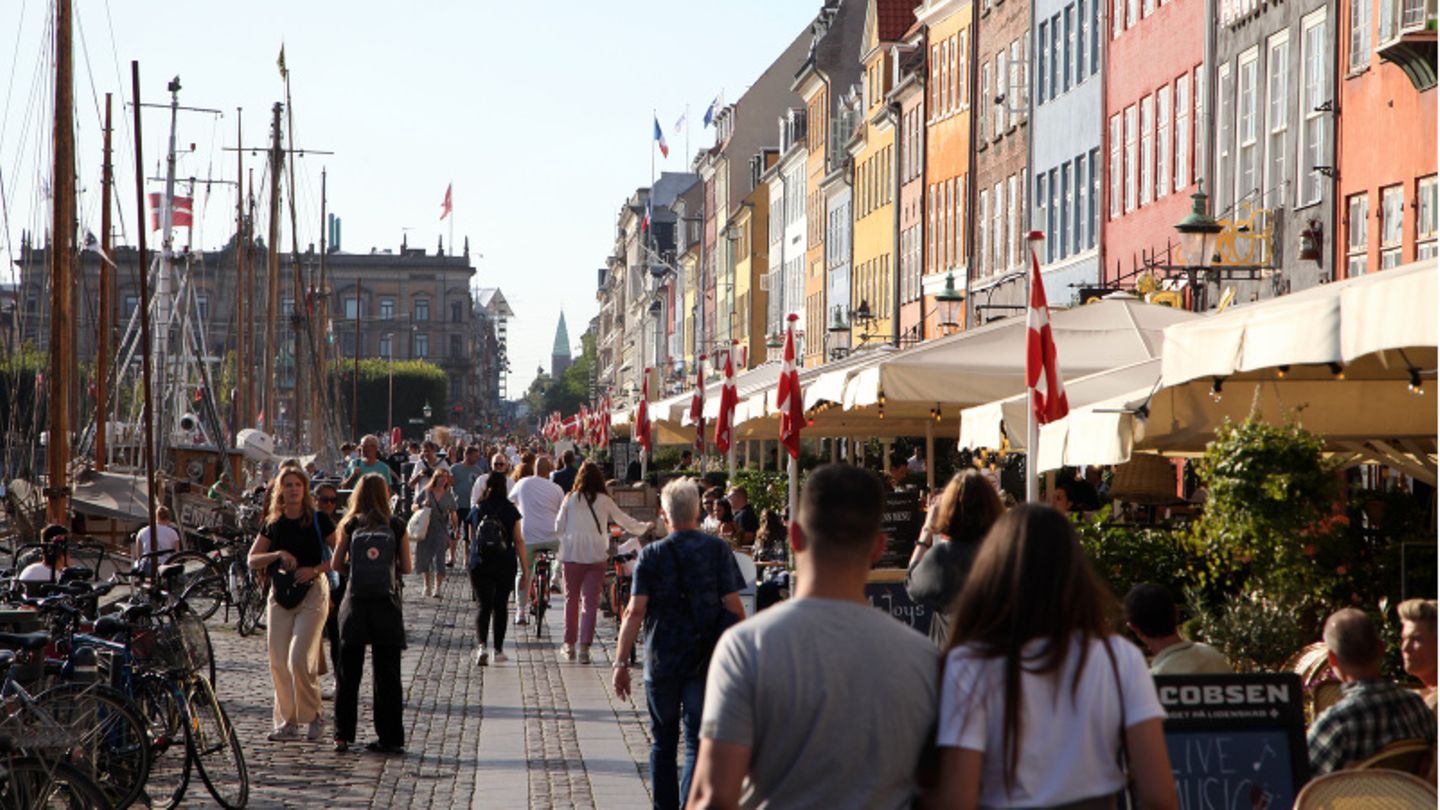About a year and a half ago, Denmark was one of the first countries to react drastically to the corona pandemic. That obviously paid off. As of today, there are no longer any restrictions in the country.
Anyone strolling through downtown Copenhagen has been wondering for a long time whether it is actually still a pandemic. Around Strøget, the long pedestrian zone of the Danish capital, something like normality has gradually returned over the course of the summer, as in the rest of the country, while one corona restriction has been relaxed after the next.
After the schoolchildren returned to their classrooms in the spring, restaurants and bars were allowed to serve guests again, provided they could show a Corona passport. With this little aid, with which you can show a corona vaccination, test or recovery via app, cinemas, theaters, fitness studios and other facilities were able to open again a little later. In June, Football Europe was amazed at how crowded and loud the Danish spectators were at the European Championship games in the Parken Stadium in Copenhagen. The requirement for working from the home office was also reduced, and finally the mask requirement also fell.
While life in the country has recently felt almost free of restrictions, Denmark is going one step further as of today: Exactly one and a half years after the introduction of the first far-reaching corona measures, the last existing restrictions are now being lifted – and the EU country is hoping to say goodbye to these restrictions once and for all.
“We pulled the teeth of the pandemic”
“The pandemic is not completely over, but we pulled its teeth,” says Lone Simonsen, pandemic researcher at Roskilde University. “We haven’t stopped the virus from spreading, but we have stopped hospitalization and deaths.” The main reason for this is the high vaccination rate. More than 96 percent of all people over the age of 60 are fully vaccinated – and these are those at the greatest risk of developing a serious illness.
This is one of the reasons why Covid-19, the disease caused by the Sars-CoV-2 coronavirus, is no longer categorized as a “socially critical disease” as of today. This may sound like boring formality, but it has very specific effects for people: The classification made the introduction of certain rules possible, such as a ban on gatherings, the requirement to wear a mask or the requirement to show the Corona passport in a restaurant or fitness studio, for example must have been vaccinated, recovered or tested.

“The epidemic is under control. We have record high vaccination rates,” said Health Minister Magnus Heunicke at the announcement at the end of August. His government had promised not to hold on to the measures any longer than necessary – and that was the point at which they had now reached. At the same time, he made it clear: “But even if we are currently in a good position, we are not out of the epidemic. The government will not hesitate to act quickly if the pandemic threatens important functions in our society again.”
The last restrictions in the country are now removed, for example showing the Corona passport if you want to go to major events such as football games or to one of the recently reopened discos. However, the Danish health authorities will continue to make recommendations, for example on keeping a distance.
Incidence is higher in Denmark than in Germany
Denmark, with its 5.8 million inhabitants, has tested a lot compared to other countries, with more than 40 million PCR and rapid tests each carried out. Around 350,000 people have been shown to have contracted the coronavirus, and almost 2,600 died in connection with an illness. It is interesting that the number of new infections per inhabitant has been higher than in Germany for a long time. In the comparative figures of the EU health authority ECDC, Denmark was still slightly ahead of Germany in terms of the 14-day incidence of the past two weeks.
Researcher Lone Simonsen nevertheless believes the opening is correct. “We no longer have to look at the number of infections, but rather at the number of hospital patients,” she says. This value is relatively low with currently around 130 patients. But it looks bad for those who are not vaccinated, she says. “If you are not vaccinated, you will encounter the virus in the fall or winter.”
Despite optimism: Further restrictions cannot be ruled out
Even if the Danes are now optimistic about the future, a new lockdown cannot be completely ruled out. “If we get virus mutations that the vaccines don’t help against, we can’t go on like this,” warns Simonsen. The lifting of the restrictions and the mass tests will probably lead to less knowledge about the course of the pandemic in the future. “Now we have to closely monitor the new hospital admissions. They show whether the epidemic intensity is changing and whether there are any indications that the vaccine has failed.”
David William is a talented author who has made a name for himself in the world of writing. He is a professional author who writes on a wide range of topics, from general interest to opinion news. David is currently working as a writer at 24 hours worlds where he brings his unique perspective and in-depth research to his articles, making them both informative and engaging.




